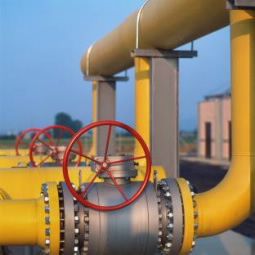EMBARGOED FOR RELEASE | March 26, 2012
More economical way to produce cleaner, hotter natural gas
Note to journalists: Please report that this research was presented at a meeting of the American Chemical Society
A press conference on this topic will be held at 2:45 p.m. Eastern Time, March 26, 2012, in the ACS Press Center, Room 15A, in the San Diego Convention Center. Reporters can attend in person or access live audio and video of the event and ask questions at www.ustream.tv/channel/acslive.
SAN DIEGO, March 26, 2012 — New technology is offering the prospect of more economical production of a concentrated form of natural gas with many of the advantages — in terms of reduced shipping and storage costs — of the familiar frozen fruit juice concentrates, liquid laundry detergents and other household products that have been drained of their water, scientists reported here today.
Media Contact
During the meeting, March 23-28, the contacts can be reached at 619-525-6268.
Michael Bernstein
202-872-6042
m_bernstein@acs.org
Michael Woods
202-872-6293
m_woods@acs.org
They told the 243rd National Meeting & Exposition of the American Chemical Society (ACS), the world’s largest scientific society, that this “super natural gas” would burn hotter than the familiar workhorse fuel and occupy about 40 percent less space in pipelines, railroad tank cars and storage chambers. But its potential benefits range beyond that — to making natural gas a better source of hydrogen for use in fuel-cell-powered cars in the much-discussed “hydrogen economy” of the future, according to Mohammad G. Rabbani, Ph.D., who reported on the study and is a research scientist in the team of Hani El-Kaderi, Ph.D.
“Natural gas has a reputation among the public as a clean-burning fuel, and that is true,” said El-Kaderi. “Compared to coal and oil, burning natural gas releases small amounts of pollutants and less carbon dioxide, the main greenhouse gas. People may not realize, however, that natural gas straight from the well often is contaminated with carbon dioxide and other undesirable gases, such as sulfur dioxide and nitrogen oxides, that are highly corrosive, increase its volume and decrease its heating value. Our new porous polymers, which have exceptionally high thermal and chemical stabilities, remove that carbon dioxide and do it better than any other solid, porous material.”
Scientists are searching for such new solid materials to purify natural gas, and the quest has grown more intense as reserves of high-quality gas, lower in contaminants and higher in heating value, grow scarcer, and concerns about global warming due to carbon dioxide continue. The traditional process for purifying natural gas, performed for decades, uses liquids to capture and separate the carbon dioxide and other gases. The process, however, is far from ideal, and scientists are seeking solids and other materials that can more efficiently capture the carbon dioxide, and then can be purged of the gas more economically, recycled and reused time and again. “Our theoretical studies on variable mixtures of CO2/CH4 have actually indicated that these polymers would have high selectivities for CO2,” said Thomas E. Reich, Ph.D., who performed these theoretical investigations as a part of his doctoral research in the El-Kaderi group.
El-Kaderi’s group developed purely organic polymers termed benzimidazole-linked polymers (BILPs) that are riddled with nano-engineered, minute, empty chamber-like pores so small that thousands would fit on the period at the end of this sentence. When exposed to streams of natural gas, the pores absorb and trap its carbon dioxide. When all of the pores are full of carbon dioxide, the BILPs can be run through a low-pressure processing unit to remove the carbon dioxide and prepare them for reuse.
Rabbani, who is in El-Kaderi’s team at Virginia Commonwealth University in Richmond, noted that the new material is as effective at capturing carbon dioxide as monoethanolamine, the most common nitrogen-based liquid used for carbon dioxide scrubbing. Amine liquids have a disadvantage, however, in that they must be purged of carbon dioxide by heating, which requires more energy than the BILPs, which are regenerated under low-pressure conditions.
El-Kaderi said the BILPs seem well-suited for removing the traces of carbon dioxide that remain in hydrogen produced with existing technology. “Carbon dioxide can account for 20 percent of the finished product, the hydrogen, and if we consider a true hydrogen economy of the future, we should be removing that carbon dioxide. Our technology appears to be an excellent candidate.”
The scientists acknowledged funding from Virginia Commonwealth University and the U.S. Department of Energy, Basic Energy Sciences.
To automatically receive news releases from the American Chemical Society contact newsroom@acs.org.
###

produce cleaner, hotter natural gas.

